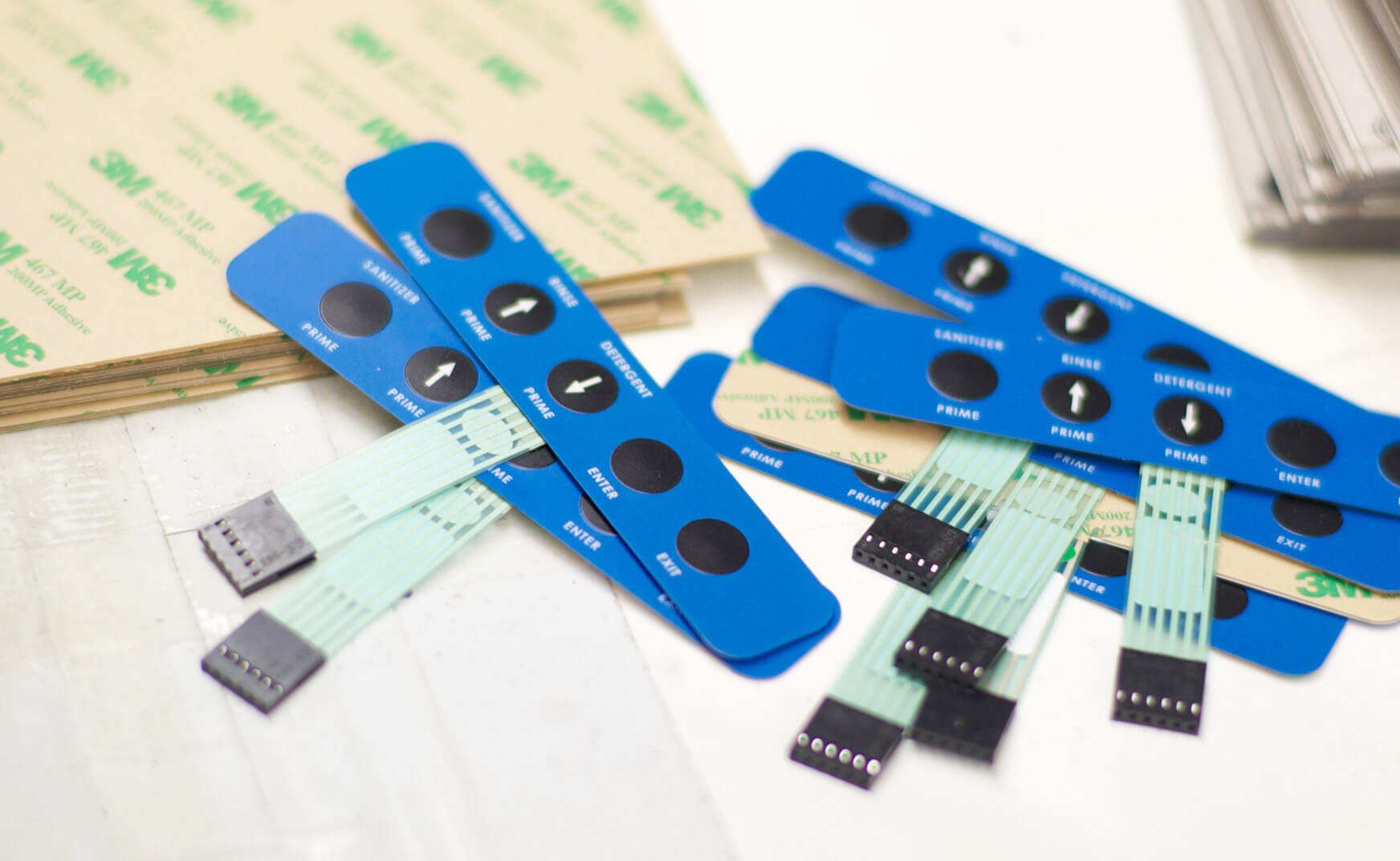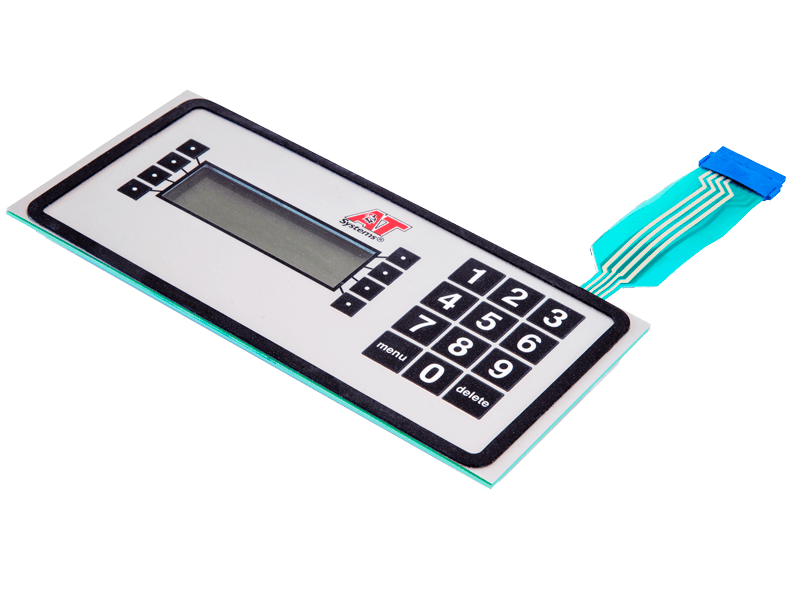All About Membrane Layer Change: Understanding Its Style and Performance
When you consider the control interfaces in modern-day devices, membrane layer buttons commonly come to mind. These components are much more than simply switches; they blend style and functionality perfectly. Comprehending exactly how they function and what makes them reliable can transform your point of view on day-to-day electronic devices. There are subtleties to their style and performance that you could not be aware of. Let's explore what collections membrane switches over aside from various other control systems.
What Are Membrane Layer Switches?

Their seamless nature makes them very easy to tidy and immune to dust and moisture, a vital attribute in numerous environments. Membrane switches can likewise be tailored relating to shape, size, and graphics, allowing producers to create unique interfaces tailored to specific products. And also, they're lightweight and thin, which assists in decreasing the overall bulk of gadgets. Overall, membrane buttons play a substantial duty in boosting user experience across a broad selection of applications.
Just How Membrane Switches Job
When you press a secret on a membrane button, it turns on a straightforward yet efficient mechanism. membrane switch manufacturer. The leading layer, typically made of flexible product, pushes down onto a conductive layer beneath it.
You'll discover that the responsive comments varies based upon the switch layout, supplying either a soft click or an extra obvious response. As soon as you launch the secret, the membrane returns to its initial setting, reopening the circuit and stopping the signal. This process takes place practically instantaneously, ensuring a responsive customer experience.
Membrane layer switches are prominent as a result of their durability and resistance to dirt and dampness, making them optimal for numerous applications, from household devices to medical devices. Recognizing this procedure assists you value their widespread use.
Key Components of Membrane Buttons
Understanding the key elements of membrane layer buttons is essential for comprehending their performance and style. The safety layer shields versus environmental aspects and use, prolonging the switch's life expectancy. By comprehending these parts, you'll acquire insight into just how membrane switches operate and their relevance in different applications.
Materials Utilized in Membrane Layer Switch Layout
The performance and durability of membrane layer changes greatly depend upon the products used in their design. You commonly come across polyester and polycarbonate as key substrates because of their excellent stamina and flexibility. These products resist scratches and chemicals, making them ideal for demanding environments.
The conductive layers often utilize silver or carbon, chosen for their dependability and conductivity. membrane switch manufacturer. Silver supplies premium performance, while carbon is a cost-effective alternative. For the overlay, you could consider a matte or shiny coating, depending upon your visual needs and individual experience
Make particular to pick adhesives that withstand environmental aspects like temperature level and humidity. Selecting the best materials will certainly assure your membrane switch stands the examination of time.
Style Considerations for Membrane Layer Switches
While making membrane layer switches, it's vital to take into consideration different variables that influence their find here capability and individual experience. Begin by concentrating on the design and button dimension; make sure they're instinctive and simple to navigate. Think about the tactile comments you desire to offer-- will individuals need an obvious click or a softer touch? Additionally, consider the products you'll use, as they'll influence durability and aesthetics.
Verify your design suits ecological elements, like moisture or temperature level variations, which can influence performance. By very carefully taking into consideration these components, you'll develop a membrane layer button that boosts functionality and complete satisfaction.
Applications of Membrane Layer Switches
Membrane layer switches are versatile components found in numerous applications, from industrial tools to consumer electronic devices. You'll see their effect in devices that call for durable interfaces and in gadgets that profit from sleek designs. Recognizing these applications assists you value the capability and usefulness of membrane layer buttons in daily modern technology.
Industrial Tools Use
When you're looking website here to boost the performance of industrial tools, membrane layer switches supply a reputable service that incorporates longevity with user-friendly layout. These buttons are excellent for rough atmospheres, offering resistance to dust, wetness, and chemicals. Embrace membrane switches to simplify your procedures and enhance general efficiency.
Customer Electronic Devices Assimilation
In the domain of customer electronics, membrane layer switches play a necessary function in enhancing user interaction and gadget performance. Membrane buttons also ensure durability and resistance to dirt and moisture, prolonging the life-span of your electronic devices. By picking membrane layer buttons, you boost not just the performance yet also the style of your gadgets, making daily interactions smooth and pleasurable.
Benefits and Negative Aspects of Membrane Switches
While membrane switches supply an array of advantages, they additionally come with some disadvantages that you should take into consideration. One substantial advantage is their compact layout, making them optimal for space-constrained applications.

Nevertheless, there are disadvantages. Membrane layer switches can have a much shorter lifespan contrasted to mechanical buttons, particularly under heavy usage. They can additionally be less responsive, which could affect customer responses throughout operation. Additionally, if harmed, repairing them can be challenging and often calls for full substitute. Eventually, their sensitivity to extreme temperatures and environmental problems might restrict their performance in particular settings. Stabilizing these advantages and disadvantages will certainly aid you figure out if membrane buttons are the best fit for your job.
Frequently Asked Questions
The Length Of Time Do Membrane Layer Switches Usually Last?
Membrane layer changes normally last between 5 to 10 years, relying on use and environmental problems. You'll wish to evaluate factors like wear, exposure to dampness, and temperature level fluctuations to evaluate their longevity effectively.
Can Membrane Layer Switches Be Personalized for Certain Designs?
Yes, you can customize membrane switches to fit particular styles (membrane switch manufacturer). You'll have the freedom to choose colors, shapes, and designs that match your task's needs, ensuring they mix perfectly with your total visual
What Is the Expense Variety for Membrane Layer Switch Over Manufacturing?
The expense array for membrane layer switch production usually drops in between $1 and $10 per device, relying on elements like style intricacy, quantity, and products. You can get quotes from producers to find the finest option.

Are Membrane Layer Switches Water-proof or Resistant?
Membrane switches can be created to be water-proof or resistant, depending on products utilized and building and construction techniques. If you require them for damp settings, guarantee you define those requirements during the style procedure.
How Do Membrane Layer Switches Over Contrast to Traditional Buttons?
Membrane layer switches are generally thinner and more adaptable than traditional switches, providing a streamlined design. They're typically easier to cleanse and integrate, yet could not provide the responsive responses you're utilized to with mechanical alternatives.
Verdict
